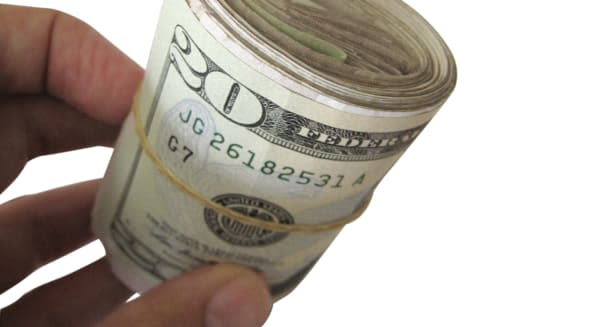5 Reasons Why We Have Yet to See Inflation

By Brett Carson
It is often said that the current bull market is one of the most hated of all time. This is most likely due to the fact that many investors have missed it, but it's likely also due to the massive market intervention from the Federal Reserve's quantitative easing program. According to gold bugs and other fear mongers, this "money printing" was going to spark hyperinflation, much like it did to Germany's Weimar Republic. Yet, it never came. In fact, there was a time, not long ago, that many began to worry about deflation, which can be even more difficult to overcome than its counterpart. Here are five reasons why quantitative easing hasn't resulted in massive inflation:
%VIRTUAL-WSSCourseInline-922%1. Stagnant wages. One of the mandates of the Federal Reserve is to create "maximum employment," which is defined as all labor resources being used in the most economically efficient way. Casual observers might believe this goal is near through, observing traditional statistics like the unemployment rate, which now stands at 6.3 percent according to the Bureau of Labor Statistics, and has been in decline since the Fed intervened with different versions of quantitative easing. However, despite the gains in the labor market, U.S. workers have seen little increase in pay. Also according to the Bureau of Labor Statistics, average wages for Americans registered at $24.31 an hour last month, which was flat versus March's level and up only 1.9 percent compared to last year. After adjusting for the U.S. government's official estimate of inflation, April's wages only increased 0.5 percent year-over-year.
While addressing the media in a press conference recently, Federal Reserve Board Chair Janet Yellen said that she would like to see wages grow by 3 to 4 percent per year, a pace she considers normal. However, we haven't seen those types of gains since the beginning of the Great Recession. Until Americans have more money to spend, it is likely high inflation will be kept at bay.
2. Companies lack pricing power. In a classic "chicken or the egg" argument, there is a historical argument that wages don't begin to grow until prices go up. In other words, as things become more expensive, workers will demand higher wages. In this slow and sluggish economic recovery, it has been difficult for most companies to raise prices due to weak demand. Some may take issue with the claim that prices haven't increased, pointing to rises in gas, college tuition, health care, food, etc. However, key areas of the economy have seen price declines since 2005, including housing, electronics and clothing. After compiling all the things that Americans purchase, prices just haven't gone up very much and employers aren't being pressured to dole out raises. This will likely remain the status quo until the economic recovery picks up steam.
3. Bank lending is slow. Many were convinced that the money created by the Fed's quantitative easing program would spark hyperinflation. Yet, few of those dollars have found their way into people's pocketbooks. Much of that cash is still parked on bank's balance sheets. In fact, excess reserves at banks are north of $2.5 trillion, according to FactSet, which is more than triple the amount there was during the depths of the recession. Banks are under considerable scrutiny and observation from regulators that want to ensure that the excessive lending that nearly collapsed the entire financial system doesn't ever happen again. Until financial institutions see a return of high-quality loan demand or their regulator noose is loosened, lending will likely stay modest.
4. People don't expect inflation. There's a certain element of inflation that boils down to economic philosophy and human behavior. If you talk to anyone who lived through late 1970s early 1980s during the last time we experienced high inflation, people anticipated that prices would continue to rise. Thus, there was an incentive to purchase goods and services sooner rather than later. This spike in short-term demand creates inflation in what is, essentially, a self-fulfilling prophecy. Since inflation expectations remain low, this self-fulfilling prophecy works in the economy's favor as well.
%VIRTUAL-article-sponsoredlinks%5. Global growth remains tepid. Lastly, the world has changed quite a bit since the last time we had high inflation in the U.S. Our economy has become more global and integrated with what happens in other countries and their economic growth. Yet growth is hard to find in most developed economies, and even emerging economies like China have witnessed meaningful decelerations in their growth.
Interest rates around the world are near zero for a reason -- economies across the world are struggling to grow. Central banks around the world have watched what the Fed has done and are now either already copying these policies or expected to in the near future. As long as growth in the global economy remains sluggish, the prospects for high inflation will be low.
These are certainly unprecedented times. Never before have we seen such massive monetary intervention by the Fed and from central banks around the world. However, we also have never seen such a painfully slow economic recovery. Until growth begins to accelerate meaningfully, high inflation will likely remain an outcry of gold bugs instead of a reality.
Brett Carson, CFA, is the director of research for Carson Institutional Alliance where, as portfolio manager, he is directly responsible for managing several strategies, including perennial growth, long-term trend and write income. Additionally, the Omaha-based research department conducts thorough analyses of companies to identify undervalued stocks that carry attractive upside potential.
